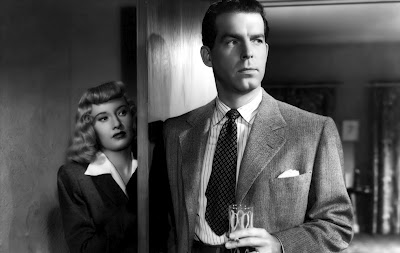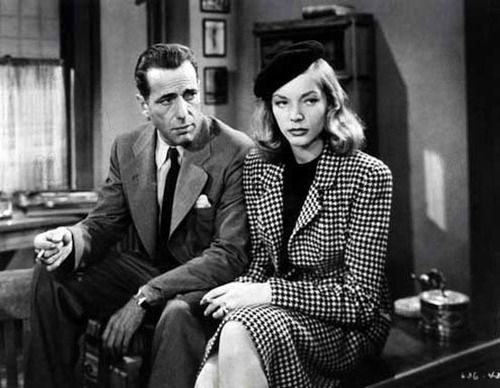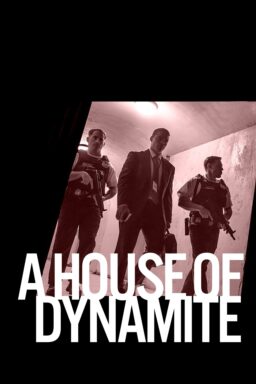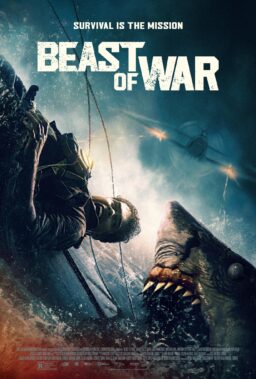Editor’s note: The new book “Rainer on Film: Thirty Years of Film Writing in a Turbulent and Transformative Era” (published by Santa Monica Press) is a remarkable collection of reviews and essays from Pulitzer finalist Peter Rainer, film critic for the Christian Science Monitor, who has also written for the Los Angeles Times, the Los Angeles Herald Examiner, New York magazine and other publications, and has made regular appearances on NPR to discuss film.
Buy “Rainer on Film: Thirty Years of Film Writing in a Turbulent and Transformative Era” at Amazon. And for those in New York City, Peter Rainer will host a screening of “Rear Window” at the BAM Cinema in Brooklyn on September 24 at 7pm with a discussion and book signing. Get more information and tickets here.
Neo-Noir
Los Angeles is the city where you go to lose your past and create your future. It remains so despite the cataclysms of the past few years. It’s Make-over City, which is probably why it’s always been a Xanadu for con artists, and for artists, too—the distinction in L.A. is not always clear. It’s a place where you feel as if you’re on the lam even if you stay put for thirty years. You’re on the lam but you still want to look good. The sunlight is an emollient; it makes you feel burnished, rich, favored.
Film noir, with all its poignant, wronged dupes and inky femmes fatales, has an enduring appeal in the movie capital. From before “Double Indemnity” right past “The Grifters,” it’s a genre that is seemingly at odds with the city from which it slinks. If, in the popular imagination, sun-embossed Los Angeles is all future and no past, film noir is speckled with night creatures who are all past and no future.
Film noirs aren’t set only in L.A., though it certainly helps. Noirs set in New York, like, say, “Sea of Love,” always seem redundant—the city is too menacing to act as a backdrop to the menace in the foreground. Noirs don’t even have to be urban, though that helps too; their landscape for murder is best outfitted in concrete. The new cycle of contemporary rural noirs, like John Dahl‘s “Red Rock West” and, for the most part, “The Last Seduction,” are tart downers. Urban noirs set up the countryside as a moo-cow place of refuge—if only as a place to expire in peace. The rural variants close off even that possibility. Corruption has gummed up the hinterlands, too. There is no refuge.

But wherever noirs take place, just about all of them are concocted in L.A. They take place in an L.A. of the mind, where the streets are often rain-slicked and the after-hours action reaches toward dawn, where men wear trench coats and black jackets and black ties and women with high-maintenance black lipstick are armored in form-fitting sheaths. The classic noir plot is about passion as descent—a hard-boiled softy is pulled down to his doom by a born-to-be-bad temptress. But noir is just as easily defined by its enameled fragments of style, its Kabuki. Noir is about guns pulled out of desk drawers, ceiling fans, blackmail photos, cigarettes, jukeboxes, shattered wedding photos, black widows, voice-over narration that sounds like it was recorded at 3:00 am in an all-night diner, fingerprints, penthouses, a pair of eyes in a rearview mirror. The buzz of a motel sign is a clue to the mood. Noir is, finally, about being trapped, and the patterns of entrapment are depicted in near-abstract visuals. Characters are rendered as half-shadowed, almost sculptural forms; the glow of a street light through venetian blinds registers as ghostly prison bars on the sodden, aghast face peering through the window.
When noir becomes unmoored from its usual strictures it can still function as noir if the mood is voluptuous enough; “Batman” and “Blade Runner” and “The Crow” could qualify. Color noirs like “Chinatown“—or just about any noir made from the sixties onward—still partake of the darkness. There’s something unseemly, almost fetishistic, about the play of light and dark. Characters are tattooed in shadow. Noir lives seem to be taking place in the interrogative glare of a police lamp.
In film noir, the subject proceeds from the look. Noir, in other words, is a species of fashion. Its characters are forever modeling in an infernal pageant about money, sex, and death. And perhaps noir is increasingly fashionable now because, as an antidote to the in-your-face tabloid horrors that push at us from all sides, we yearn for depravity with a bit of the moderne to it. We want the stuff of noir that’s been co-opted by the scandal sheets and the talk shows and Court TV to be reclaimed by the conventions of forties pulp. We want it to be nasty fun again. Noir represents a safe retroism—antiqued by rules as rigorous as those of chivalric poetry—and it’s stylish, too.

But fashions—in clothes or politics or pop—don’t hang around for very long these days; everything is in a postmodern flip-flop. The Beats and the Atomic Age and hard rock and rap are cross-wired with forties sultriness and fifties va-va-voom. A glib neo-noir like Quentin Tarantino’s “Pulp Fiction” heats up the jumble; it Mixmasters pierced body parts and Hawaiian shirts and Armani jackets and fifties diners and a soundtrack of surf hits and boomer faves. The short-attention-span generation has evolved its own aesthetic—impermanence is permanence.
Noir—traditional noir, anyway—attempts permanence another way, by reaching for the archetypal. (Archetypal, replacing mythic, has become the latest Hollywood buzzword.) Directors, particularly the younger, film-school set, don’t know what to do with the times, so they retreat to timelessness. John Dahl remarked in an interview: “If someone watched ‘Red Rock West’ and thought it was made ten or twenty years ago, I’d be thrilled.” Timelessness is classic.
Los Angeles, with its prefab impermanence, is a city forever in search of the classic. In pop-culture terms, Hollywood movies have provided L.A. with its only hallowed text, and within it the film noir occupies pride of place. Noir isn’t really so at odds with its city. They need each other. Where better to set off such sleek anomie than in the wonderland where, if you’re lucky enough to hit with a script or get a record deal, if you land a series or get discovered, you can all at once vault your crummy life and become a pop pasha? Fast-track L.A. and film noirs both hinge on fate, but in the films the fate all runs downhill (everything always ends up worse than it started). Few noirs flatter the city. What we most often see are the back alleys and dingy offices and nondescript streets. The ocean is there only to remind us of the end of the line. Penthouses are aeries from which to view the glittering rot below. It’s paradise nixed.

Noir may be a classic, but even classics have their season. The movie cycle, with its roots in the pulps, began in the early forties—”The Maltese Falcon” is the first celebrated example—and stretched unbroken through the mid-fifties, with brutal scaldathons like “The Big Heat” and “Kiss Me Deadly.” The genre’s trademark expressionism was largely an imported pleasure; many of the best noir filmmakers, like Billy Wilder, Fritz Lang, Robert Siodmak, and Otto Preminger, were Austrian or German immigrants to Hollywood in the thirties. (There’s a lot of Weimar in noir.) The term “film noir” is an imported pleasure, too, coined after World War II by Hollywood-steeped French film critics.
The cycle was set up in the late thirties, when Hollywood movies were still marinating in post-Depression funk and fatalism. Then the war years came along and pasted over the national scowl with patriotic bumper stickers. The postwar flourishing of noir was a rebuke to all the enforced uplift. In a world where edgy servicemen didn’t really know the wives or girlfriends they were returning to (and vice versa), noir secured a terrain where men deeply distrusted women. In a climate where prosperity was suspect, noir assumed—Balzac was right—that behind every great fortune was a great crime.

The sixties and early seventies were a noir dry gulch. Those years thrived on a flamboyant, free-form alienation, whereas, in the best noirs, the alienation is encrypted in the style. Recently—with titles both famous and obscure, like “Bad Influence,” “Malice,” “Final Analysis,” “Basic Instinct,” “Body of Evidence,” “China Moon,” “Dream Lover,” and “Color of Night,” in addition to Dahl’s films and Tarantino’s first feature, “Reservoir Dogs“— noir has been on the upswing because of circumstances strikingly similar to those of its heyday. Post-Vietnam funk, Reagan-Bush feel-goodism, the smudging of sex roles, AIDS, the recession—a brewmaster for neo-noir could not hope for a yeastier mix for fear and loathing.
Noir, for all its taint and shadow play, is obsessed with purity. The fated noir hero, from Raymond Chandler on, has always carried a princely nimbus. But all that Philip Marlowe stuff (“who is not himself mean, who is neither tarnished nor afraid”) has its reactionary side, too. In the current, raging sexual arena, noirs play out a man’s worst wimpy self-image. For men, noirs feed the fear that you’re not a tough guy but a taken guy. You’re soft in the head. Women are beastly; their tears are vitriol. The men in noirs tend to be slack and damaged, but the femmes fatales—think of Kathleen Turner in “Body Heat” or Anjelica Huston in “The Grifters”—are intimidatingly sky-high goddesses. The noir femme fatale is Hollywood’s response to the feminist rant about why there aren’t stronger roles for women. The answer is: maybe sharky Hollywood producers don’t care for strong women unless they’re deadly. Besides, smart-cookie women have always loved noirs. The avenging vamp is far from their worst self-image—there’s too much sex in it.

Noir is vehemently un-PC and anti-feel-good, and this is another clue to its enduring guilty-pleasure appeal. The guilt lies in our recognition that hate is a pretty exciting—a pretty sexy—emotion. Noir luxuriates in the effrontery of the obvious. If you look bad, you are bad. Dames are bad. Obesity is heinous; the rich are rotters. Noir cuts to the reactionary quick. (For all that, noir has always been one of the few genres that explicitly recognize, if only for the purposes of plot, the existence of a class system in America.) Its cast of characters is limited. Los Angeles is the great modern American melting pot, but, except for Tarantino, few of the neo-noir filmmakers admit Latinos, blacks, or Asians into their movies (not even as bad guys). It’s a convenient never-never land, like the Universal Citywalk, a mall where locals and tourists can dawdle and buy gew-gaws in a riot-free zone of totalitarian spic-and-span. How come no one has come up with NoirWorld?
In a way, Los Angeles already has its NoirWorld. It’s right there in the cheap-chic neo-noir look on Melose Avenue and Hollywood Boulevard, in the coffee shops and in the burgeoning blues clubs. The cutting edge Xers of Hollywood are into a kind of fringy, baby-noir getup—lots of black and white and sunglasses.
How much of this look derives from films? Hollywood movies no longer are central to the lives of high-school and college kids in the way that, say “Saturday Night Fever” or “The Graduate” were. Rock and rap have almost entirely assumed this defining function. (For twentysomethings, it’s much hipper now to rent an old black-and-white Hollywood movie than to see a big new one.) But a few of the flukier hits, from directors like David Lynch, Tim Burton, John Waters, and Gus Van Sant, still make a connection on the style level. They’re fringe hits for the fringe-youth mass audience.
The neo-noir look on the L.A. streets is the uniform from the fringe hit Reservoir Dogs, with its gallery of clueless hommes fatales. Instead of the big shoulders and double-pleated pants from the forties, it’s a late-fifties, early-sixties thing: high-buttoned black suit, black tie, white shirt, shades. The Xers sporting this style are noir’s missing link. If there had been any noir heroes in the Kennedy era, they would have looked like this. The look is anonymous, thrifty, and rebellious—but not too rebellious. After all, these Xers are less interested in tearing down the middle class than becoming it. So it’s a black-and-white look that works high and low. You can go from thrift threads to Armani without ever having to warp your personal style.
The female Xers of Hollywood are caught up in a complementary noir-o-rama. The fifties lingerie look, the peignoirs and corsets and Wonderbras, plays off the contempo coffee-bar look, with its black nail polish, black lipstick, black jackets. Why, even hot young L.A. blondes are dyeing their hair black!
The over-inflated fatalism that was always the lifeblood of noir has seeped into the Xers. Feeling powerless, they convert black-and-white blankness into something alienating and hip. It’s a taunt, a joke—the “empty” generation is flaunting its emptiness.
But these kids also care deeply how they come across; they connect with the adolescent romanticism inside their pose. And that’s part of noir, too. It’s all about caring while pretending not to. The baby-noir Xers are touchingly up-front about their anomie. They can’t hide it so they turn it into an emblem. They’ve instinctively grasped the essence of L.A., which is also the essence of film noir. It’s the place where your identity and your secret identity are joined.
(Esquire Gentleman, 1995)











